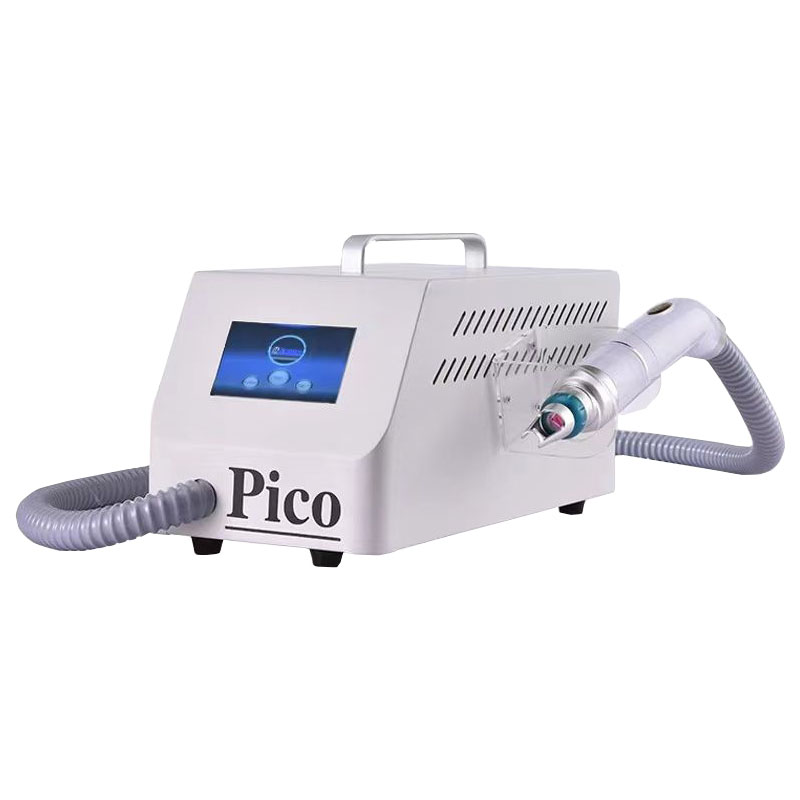How Does Laser Tattoo Removal Work?
2025-09-09
Removing unwanted tattoos has become a growing trend across the globe, and laser tattoo removal has emerged as the safest, most effective, and least invasive method available today. Whether your tattoo has faded over time, no longer represents your lifestyle, or simply didn’t turn out the way you expected, understanding how laser tattoo removal works and why it is the preferred choice will help you make an informed decision.
What Is Laser Tattoo Removal and How Does It Work?
Laser tattoo removal is a non-invasive cosmetic procedure that uses concentrated pulses of light energy to break down ink particles embedded within the skin. Over multiple sessions, the body’s natural immune system gradually flushes these fragmented ink particles away, resulting in the tattoo fading and eventually disappearing.
The Science Behind the Process
When a tattoo is created, ink pigments are injected deep into the dermis layer of the skin. These particles are too large for the body’s immune cells to remove naturally, which is why tattoos are generally permanent. Laser tattoo removal solves this problem by emitting high-intensity light beams that specifically target and shatter the ink pigments without damaging the surrounding skin tissue.
-
Selective Photothermolysis: The laser targets ink pigments based on their color and absorbs them without affecting nearby tissues.
-
Fragmentation of Ink: Each laser pulse breaks ink into microscopic particles.
-
Immune System Response: The body’s lymphatic system naturally removes the broken-down ink over time.
This process ensures that laser tattoo removal remains the gold standard in tattoo fading and complete removal.
Why Choose Laser Tattoo Removal Over Other Methods?
Tattoos can be removed through multiple approaches, but laser technology is the safest and most effective method recognized by dermatologists worldwide. Other outdated techniques, such as dermabrasion, salabrasion, or excision, often lead to scarring, infections, and inconsistent results. In contrast, laser treatments deliver precision, safety, and superior cosmetic outcomes.
Key Advantages of Laser Tattoo Removal
| Feature | Laser Tattoo Removal | Dermabrasion/Excision | Topical Creams |
|---|---|---|---|
| Effectiveness | 90-95% ink removal possible | Often incomplete | Minimal results |
| Safety | FDA-approved technology | High risk of scarring | Risk of chemical burns |
| Skin Preservation | Targets ink only, spares healthy skin | Damages multiple layers | Uneven pigmentation |
| Recovery Time | Minimal downtime, quick healing | Weeks of recovery needed | N/A |
| Pain Level | Mild to moderate (manageable) | Significant discomfort | N/A |
Customization Based on Ink Colors
Advanced laser systems use multiple wavelengths to target various ink colors:
-
1064 nm wavelength → Best for dark inks like black and blue
-
532 nm wavelength → Targets red, orange, and light-colored inks
-
755 nm wavelength → Specializes in removing green and teal pigments
This multi-wavelength approach ensures precise treatment, even for complex tattoos with multiple colors.
Technical Specifications of Our Laser Tattoo Removal Systems
To deliver optimal results, we use cutting-edge Q-switched and Picosecond laser technology. These systems provide short, high-energy pulses designed for maximum pigment breakdown and minimal skin damage.
Product Specifications
| Specification | Details |
|---|---|
| Laser Type | Q-Switched Nd:YAG / Picosecond Technology |
| Wavelengths | 532 nm, 755 nm, 1064 nm |
| Pulse Duration | 300–600 picoseconds |
| Spot Size | Adjustable: 2–10 mm |
| Fluence | Up to 800 mJ per pulse |
| Cooling System | Integrated contact cooling for comfort |
| Recommended Sessions | 4–10 sessions, depending on ink depth |
| Safety Certification | FDA, CE, and ISO-approved |
Treatment Process Overview
-
Consultation & Skin Analysis
Every treatment begins with a detailed assessment of your skin type, tattoo size, and ink colors. -
Laser Application
Pulses of targeted laser light are applied to the tattooed area. -
Cooling & Comfort
Our integrated cooling system minimizes discomfort during the session. -
Recovery & Aftercare
Patients experience mild redness or swelling, which usually subsides within 24–48 hours.
With these advanced systems, we achieve faster results, fewer sessions, and safer outcomes compared to older technologies.
Common FAQs About Laser Tattoo Removal
Q1: How many sessions are required for complete tattoo removal?
The number of sessions depends on several factors, including the size of the tattoo, ink density, colors used, and skin type. On average, most patients need 6 to 10 sessions spaced 6–8 weeks apart. Black ink is generally the easiest to remove, while vibrant colors like green and blue may require additional treatments.
Q2: Is laser tattoo removal painful?
Discomfort levels vary, but most patients describe the sensation as similar to a rubber band snapping against the skin. Our laser systems feature integrated cooling technology and optional topical anesthetics to ensure a comfortable experience.
Choose ELOS for Safe and Effective Tattoo Removal
Laser tattoo removal has evolved into a highly effective and minimally invasive solution for people seeking a fresh start. Whether you want to erase a tattoo completely or simply lighten it for a cover-up, advanced Q-switched and Picosecond laser technologies deliver unmatched results.
At ELOS, we combine state-of-the-art equipment with expert practitioners to provide safe, personalized, and effective tattoo removal services. Our goal is to help you regain confidence in your skin while ensuring comfort and long-term satisfaction.
If you’re ready to take the first step toward clear, tattoo-free skin, contact us today to book a free consultation and discover how we can help you achieve your desired results.



